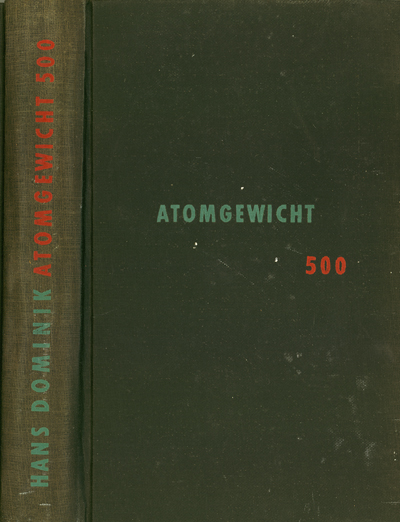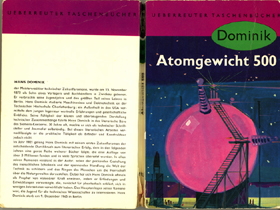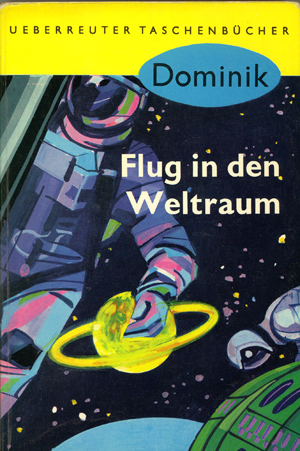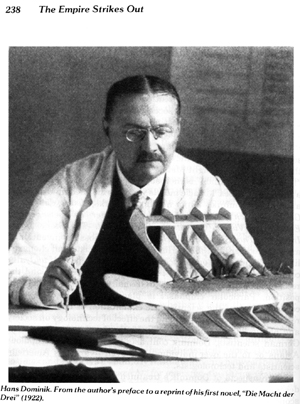 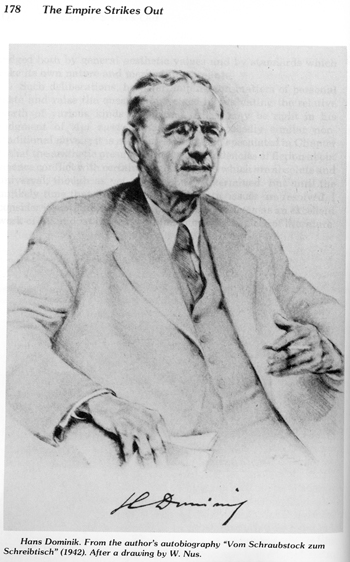
After studying math with Laßwitz, Dominik trained as an engineer, did an internship in the US, and then worked for electrical companies. He began steady writing of fiction shortly after WWI. His many novels, which ranked as super-bestsellers, dealt with the "hard" technology (and, sometimes, science) of the near future: new fuels, atmospheric flight, etc.). The plots were exciting, the characters noble and flat, the prose plain and even tacky. They sold hundreds of thousands per title (far more copies than, for example, Thomas Mann or Hesse).
They were clearly nationalistic and racist - Dominik was not alone in this. But he was a German conservative, not an active Nazi. Still, his novels were reissued until very late in the War, despite shortages in everything, including paper, ink, and presses; that meant that the Nazis regarded them as not merely unsuspicious, but rather as products that contributed positively to their goals. Those that depicted futuristics weapons were counted on to encourage faith in a wonder weapon (Wunderwaffe) that would somehow reverse the course of the War. There is no evidence, however, that Dominik paid any attention to the work in rocketry that went on openly in Berlin before 1933, and then developed into the military weapons program of Wernher von Braun and the V-1 and V-2 rockens (V = Vergeltung = revenge).
After WWII the novels were reissued in mass paperback editions, sometimes with upgraded scientific content or softening of the ethnic slights. Dominik was widely known among the generations that grew up during the Weimar, Nazi and immediate post-war years. The pictures below are from the post-WWII editions.
|
